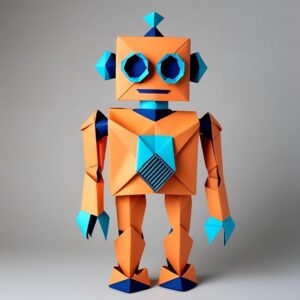The fashion and textile industry is one of the most resource-intensive sectors in the world, generating massive volumes of waste each year. In response to the growing environmental and social concerns, many forward-thinking companies have begun to adopt the principles of the circular economy. Unlike the traditional linear model of “take, make, dispose,” the circular economy is based on reuse, repair, recycling, and regeneration, aiming to extend the life cycle of products and reduce the need for virgin resources.
In the textile industry, circular economy practices can take many forms: collecting and repurposing used clothing, designing garments with recyclability in mind, creating take-back programs, and even transforming textile waste into new fibers. Below are some inspiring examples of companies that are actively embracing this shift and proving that sustainability and innovation can go hand in hand.
Patagonia: Repair, Reuse, Recycle
Patagonia is a global leader in sustainable fashion and a pioneer in integrating circular principles into its business model. Through its Worn Wear program, the brand encourages customers to repair their clothing instead of discarding it. They offer repair services, tutorials, and even sell used Patagonia items on their Worn Wear platform.
The company also integrates recycled materials into many of its products, including polyester made from used plastic bottles. Their commitment to circularity extends from product design to post-use initiatives, making Patagonia a standout example of a brand that blends performance, purpose, and environmental responsibility.
The Renewal Workshop: Giving New Life to Unsellable Items
The Renewal Workshop is a company based in the United States that partners with apparel brands to take back unsellable or damaged items—those that might otherwise be discarded. These garments are cleaned, repaired, and resold through a special platform, labeled as “renewed.” This process extends the life of clothing and diverts tons of waste from landfills.
By working with various partners across the fashion industry, The Renewal Workshop has created a scalable model that supports circular systems and drives systemic change. Their transparent reporting and commitment to zero waste make them a model for others aiming to integrate circularity into their supply chains.
Stella McCartney: Design for Disassembly
British designer Stella McCartney has long been an advocate for sustainable fashion. She consistently challenges the fashion status quo by integrating circularity at the design stage. One of her most notable initiatives includes developing garments that are easier to disassemble and recycle, ensuring that materials can be separated and reused at the end of a product’s life.
The brand also works with Econyl, a regenerated nylon made from ocean and landfill waste, such as fishing nets and fabric scraps. By choosing innovative materials and promoting garment longevity, Stella McCartney highlights how high-end fashion and circular economy can coexist beautifully.
C&A: Closing the Loop on a Global Scale
C&A is one of the first global fashion retailers to launch Cradle to Cradle Certified™ garments—products that are designed for safe, continuous cycles of use and reuse. Their line of circular jeans, for example, is made from 100% organic cotton, with non-toxic dyes and removable metal trims that simplify recycling.
The brand also offers garment take-back programs in multiple countries, allowing customers to return used clothes, which are then sorted for reuse, recycling, or upcycling. C&A’s large-scale implementation of circular practices demonstrates that it’s possible to scale sustainability within mainstream retail operations.
Re:newcell: Transforming Old Clothes into New Fabric
Swedish company Re:newcell has developed a revolutionary process that turns used cotton and cellulosic textiles into a biodegradable pulp called Circulose®, which can be used to produce new high-quality textile fibers. This process not only reduces the need for virgin cotton, which is water- and pesticide-intensive, but also diverts old clothes from landfills.
Major fashion brands like H&M and Levi’s have already partnered with Re:newcell to incorporate Circulose® into their garments. This technological innovation plays a crucial role in closing the loop within the fashion industry and marks a big step toward true circularity.
Fashion Revolution: A Global Movement Supporting Circular Change
While not a brand, Fashion Revolution deserves mention as a global organization advocating for transparency, ethics, and circularity in the fashion industry. Through campaigns, education, and activism, they push brands to reconsider their environmental and social impact.
Their initiatives have inspired local businesses to adopt take-back systems, repair cafes, and collaborative recycling hubs. Fashion Revolution’s grassroots impact helps shape a more conscious consumer base, which in turn drives demand for circular solutions.
Circular Fashion: The Way Forward
These companies and initiatives showcase the growing momentum of circular economy practices in the textile sector. From luxury designers to mass-market retailers and specialized recyclers, each example proves that circularity is not only feasible but also beneficial—for the planet, for businesses, and for consumers.
By designing with reuse in mind, extending product life cycles, and recovering valuable materials from waste, these leaders are paving the way for a new textile economy—one that respects natural resources, promotes innovation, and redefines fashion as a force for good.












